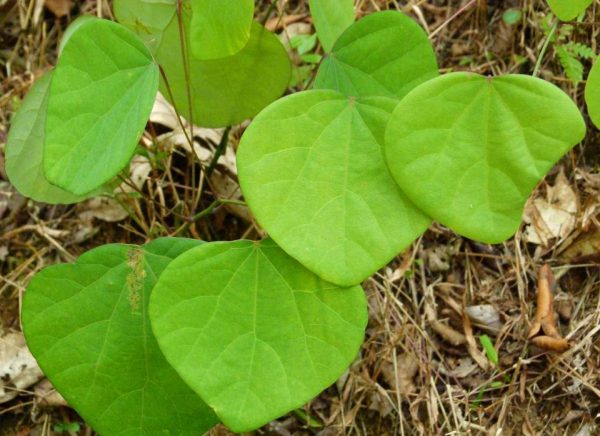Jayanti Sesbania sesban is a medicinal plant. It is known for its use in sore throat, cervical lymphadenopathy and for its anti-inflammatory properties. It is also used as a best medicine for Scorpion sting.
- Botanical Name of Jayanti – Sesbania sesban, Sesbania aegyptiaca, Aeschynomene elongata, Aeschynomene aegyptiaca, Aeschynomene sesban, Sesbania tchadica or Sesbania punctata.
- Family Name of Jayanti is Fabaceae.
Classical Categorization
In Ayurvedic classics, plants have been categorized under Varga and Gana. Like wiseJayanti Sesbania sesban comes under –
- Acc. to Raja Nighantu – Shatahvadi Varga
- Acc. to Kaiyadeva Nighantu – Aushadhi Varga
- Acc. to Dhanvantri Nighantu – Guduchyadhi Varga
- Acc. to Bhavaprakasa Nighantu – Guduchyadhi varga
- Acc. to Priya Nighantu – Haritakyadi Varga
Vernacular Names
Jayanti Sesbania sesban is known by different names in different languages.
- Arabic – Saisaban, Torero
- English – Common sesban, Egyptian Rattle pod, Egyptian Sesban, Egyptian River hemp, Yellow wisteria tree.
- Gujarati – Rayasingan
- Hindi – Jait, Jayanti, Jhijham
- Malayalam – Kitannu
- Marathi – Jayat
- Tamil – Asnaparni
- Telugu – Mallasominta, Jalugu, Sominta
- Odiya – Joyontri
Sanskrit Synonyms of Jayanti Sesbania sesban
In Ayurveda, many synonyms of Jayanti Sesbania sesban plant has been described in Sanskrit. Few of them are listed below –
- Jayanti – Daughter of Lord Indra
- Jaya – Victorious
- Jayantika – Banner of Indra
- Nadeyi – River born
- Vijaya – Victorious
- Harita
- Sukshma mula
- Balamota
- Aparajita – Which can’t be defeated
- Vikranta
Systemic Classification
- Kingdom – Plantae
- Phylum – Angiosperms
- Class – Magnoliatae
- Subclass – Rosidae
- Order – Rosales
- Family – Fabaceae
- Genus – Sesbania
- Species – sesban
Useful Parts of Jayanti Sesbania sesban
- Mula (roots)
- Twak (stem bark)
- Patra (leaves)
- Pushpa (flowers)
- Phala (fruits)
- Beeja (seed pod)
Therapeutic Uses of Jayanti Sesbania sesban
Jayanti Sesbania sesban can be used externally or internally according to diseases.
External Uses of Jayanti Sesbania sesban
- Warm Kalka (paste) of leaf is applied to Vidradhi (abscess) and vriddhi (over growth or tumor) and in sandhi shotha (inflammation of joints).
- Decotion of Jayanti Sesbania sesban is useful in cleansing wound.
- Lepan (application) of leaves is useful in Khalitya (baldness) and Palitya (premature greying of hairs).
- Paste of seeds or roots is applied as vedana sthapana (analgesic) in scorpion bite.
- Paste of leaves is useful in galaganda (goiter), Kushtha (chronic skin disease) and kandu (itching).
Internal Uses of Jayanti Sesbania sesban
- Beeja choorna (seed powder) or patra swarasa (leaves juice) is used as deepana (appetizer), grahi (astringent) and krimighna (antihelmintic).
- Bark decoction of Jayanti Sesbania sesban stem is used in rakta dushti (blood impurities).
- Patra swarasa (leaf juice) of Jayanti Sesbania sesban is useful in swara bheda (hoarseness of voice) and pratishyaya (common cold and flu).
- Leaf decoction is used in ikshumeha (diabetes) and bahumutrata (polyuria).
- Kalka (paste) of flowers are made in to a gruel and taken internally for 3 days after menstrual cycle as a contraceptive.
- Paste of leaves is applied to head for treating hair diseases and decoction of leaves is used as a hair wash.
- The decoction of leaves is used in hoarseness, throat infection, cold, coryza and cough ailments.
- Leaves are cooked to vegetable which is given to the patient in case of relapsing coryzal tendency or chronic coryza.
- Flowers are orally recommended as an anti fertility herbal remedy which carries classical base in textual sources.
- Seeds are stimulant and astringent in property and heal chronic ulcers and eruptions. Seeds of Jayanti Sesbania sesban are also useful in diseases of spleen, diarrhoea and excessive menstrual flow.
- Seeds of Jayanti Sesbania sesban removes small pox eruptions.
- Seeds powder mixed with flour applied to itching of the skin and other skin infections.
Indications of Jayanti Sesbania sesban
Jayanti Sesbania sesban is indicated in following diseases –
- Twag vikara (skin ailments), Kandu (itching)
- Kustharoga – Shvitra (leucoderma)
- Vidradhi (abscess)
- Sandhi sotha (inflammation of joints)
- Jangama Visa (animal poisons like scorpion bite/ sting)
- Kesya (good for hairs) – khalitya (baldness), Palitya (premature greying of hairs)
- Galaganda (goiter)
- Prameha (diabetes and polyuria)
- Pliharoga (spleenomegaly)
- Masurika (chicken pox)
- Slaishmika vikara (kapha dominance) – svara bheda (hoarsness of voice), pratishyaya.
- Kashtartava (dysmenorrhea), rajarodha (amenorrhea)
- Agnimandya (loss of appetiete), Atisara (dysentery) and Krimi (worm infestation).
Ayurvedic Properties
In Ayurveda, properties of every plants / drug is described by Rasa, Guna, Veerya, Vipaka and doshaghnata. Have a look below to know about Ayurvedic properties of Jayanti Sesbania sesban –
- Rasa – Katu, Tikta
- Guna – Laghu, Ruksha
- Virya – Usna
- Vipaka – Katu
- Doshaghnata – Kapha Pitta shamaka, Tridosha hara.
Dosage
- Churna (Powder)- 2 – 6 gm
- Swarasa (Juice) – 12 – 24 gm
- Kashaya (Decoction) – 50 – 100 ml
Pharmaceutical Preparations
Many Ayurvedic medicines are prepared from Jayanti Sesbania sesban. A few are listed below –
- Jaya vati
- Mahapaishachika Ghritam
- Ratnagiri Rasa
Photographs
(Click on image to zoom)




(image source – theferns.info)



